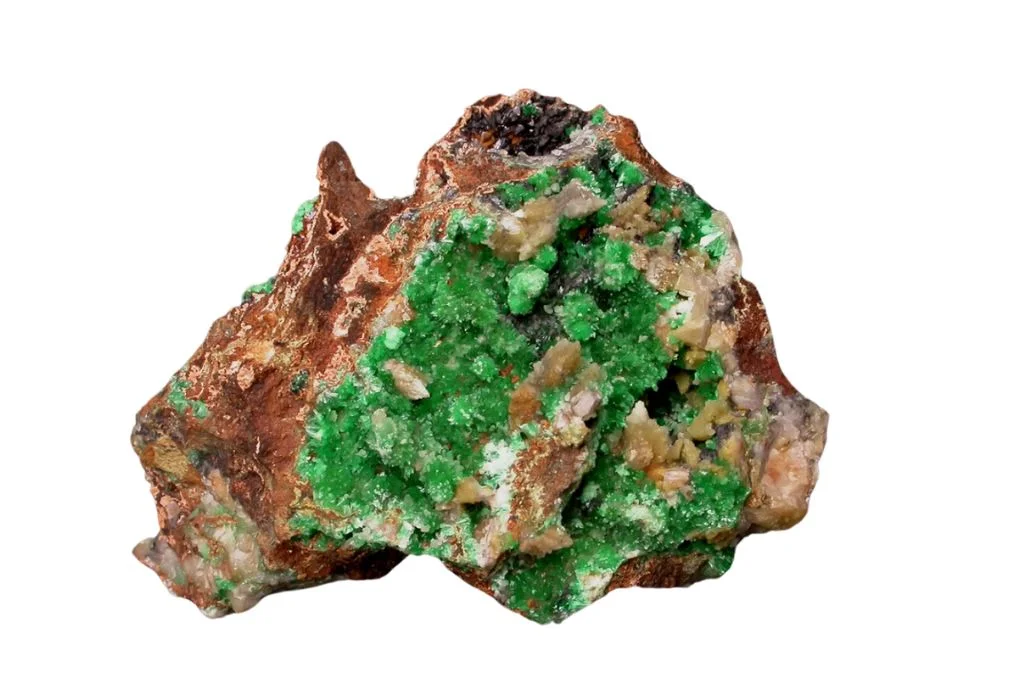Color and Appearance of Anabergite
Anabergite, a rare nickel arsenate mineral, exhibits a distinctive appearance that sets it apart from other crystals. Its most striking feature is its vibrant green color, which ranges from pale apple green to deep emerald hues. This coloration is directly attributed to its high nickel content, giving anabergite its characteristic verdant allure.
Crystal Structure and Form
Anabergite typically forms in orthorhombic crystal systems, often appearing as slender, prismatic crystals. These crystals can be needle-like or elongated, frequently occurring in radiating clusters or fibrous aggregates. The mineral also commonly manifests as crusts or thin coatings on other minerals, particularly those associated with nickel deposits.
Physical Characteristics
In terms of hardness, anabergite ranks between 2.5 to 3 on the Mohs scale, making it relatively soft compared to many other minerals. It possesses a vitreous to silky luster, which contributes to its eye-catching appearance. When viewed under different lighting conditions, anabergite may display a subtle pleochroism, shifting slightly in color intensity.
Unique Features
One of the most notable aspects of anabergite is its association with other nickel-bearing minerals. It often forms as a secondary mineral in oxidized portions of nickel deposits, frequently occurring alongside minerals such as annabergite and erythrite. This association not only adds to its geological significance but also creates striking mineral specimens when found in combination with contrasting colored minerals.
Historical and Cultural Significance of Anabergite
Anabergite, a rare nickel arsenate mineral, has limited historical and cultural significance due to its scarcity and relatively recent discovery. Named after its type locality in Annaberg-Buchholz, Germany, this mineral has primarily been of interest to collectors and researchers rather than playing a significant role in cultural traditions or historical practices.
Metaphysical Associations
Despite its limited cultural history, some metaphysical practitioners have attributed properties to anabergite. It is believed to promote mental clarity and enhance problem-solving abilities. Some associate the mineral with improved communication skills and the ability to express oneself more effectively. Additionally, anabergite is thought to foster a sense of inner peace and emotional balance.
Common Uses and Applications
Anabergite’s primary use is in mineral collections and scientific research. Its rarity makes it a prized specimen for enthusiasts and institutions studying mineralogy. In terms of practical applications, anabergite has limited industrial use due to its scarcity. However, its composition as a nickel arsenate has led to some interest in environmental studies, particularly in areas of arsenic contamination.
Believed Benefits
While not scientifically proven, some believe that anabergite can provide various benefits when used in alternative healing practices. It is thought to assist in detoxification processes, particularly in relation to environmental pollutants. Some practitioners claim that anabergite can help alleviate stress and anxiety, promoting a sense of calm and well-being. Additionally, it is believed to enhance intuition and spiritual awareness, making it a tool for meditation and personal growth exercises.

